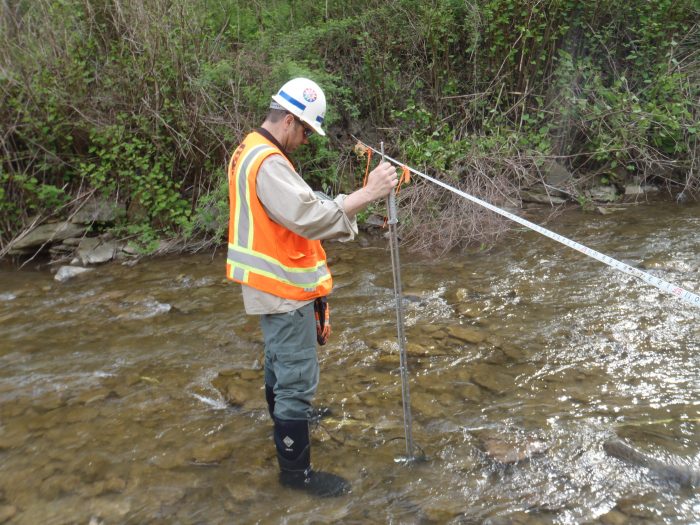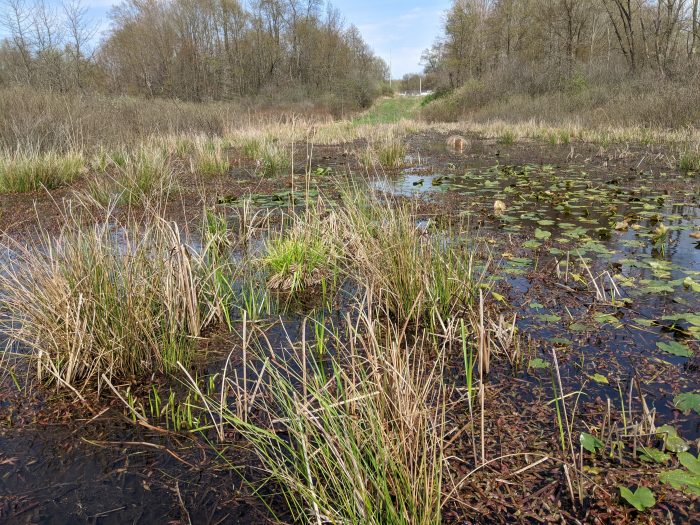EnviroScience Wetland Services Overview
The complexity of state and federal wetland and stream regulations can make developing near and in wetland and stream areas a frustrating and time-consuming process. EnviroScience can support you through the entire site development process, regardless of project size or location. We offer a wide range of services to fit almost any need while remaining cost-conscious. Our knowledgeable staff of wetland experts can identify, classify, and delineate all aquatic features on sites throughout the country. After the field review is completed, clients are provided with a detailed technical report of findings designed to satisfy all regulatory requirements and a digital map to supplement their engineering and planning objectives.
EnviroScience will guide you through the regulatory decision-making process and work with you to minimize impacts, helping you create a cost-effective design that meets your development goals. If impacts are unavoidable, EnviroScience has a team of wetland biologists with years of experience in wetland and stream permitting, including coordination with State Environmental Protection Agencies and the U.S. Army Corps of Engineers (USACE). Often when permitting for wetland and stream impacts, other ecological issues arise that require coordination with other agencies. EnviroScience can assist in most issues that arise during permitting, including threatened and endangered species coordination, habitat surveys, and presence/absence surveys due to our depth of staff. Additionally, EnviroScience can provide permittee responsible mitigation design for stream and wetland impacts if needed on larger projects.
If you are unsure about the potential implications of wetlands or stream permitting on your site, EnviroScience also offers low-cost preliminary site assessments that can indicate problematic sites before land purchase.
Important Issues
Wetlands, streams, and other waters are regulated under the Clean Water Act because of their importance in flood control, erosion management, and pollution abatement. In addition to federal laws, wetlands are also regulated under state laws and, in some cases, local zoning ordinances. The length of time necessary to obtain wetland permits has increased in recent years, making wetland issues important to consider at the beginning of your site development process. Many types of wetlands are not readily apparent, as they may only contain standing water or saturated soils for a short period of the growing season. Our trained wetland scientists will examine your site for signs of hydric soils, hydrophytic vegetation, and wetland hydrology, all of which are necessary for an area to be classified as wetland. Our broad range of wetland services means that EnviroScience can customize our services for your specific project needs.
Wetland Services
Wetland and Waterway Delineations
EnviroScience provides a wide range of wetland and stream services to clients in various industries such as engineering and design firms, development companies, legal firms, utility companies, public agencies, and private landowners. EnviroScience’s extensive team of wetland and stream delineators enables us to tackle even the largest projects and most challenging deadlines.
EnviroScience has performed wetland delineations on properties up to 6,000 plus acres and landscapes that vary from nearly pristine to severely disturbed. EnviroScience scientists are trained in the current wetland delineation methods (according to the 1987 USACE Delineation Manual and current Regional Supplements) and survey techniques using state-of-the-art Trimble® differential GPS units. GPS data collection allows EnviroScience to prepare wetland maps without the need and additional cost of traditional survey teams. The survey map and flagging of wetland boundaries provide a strong planning tool for any project involving land-use changes. We complete delineation reports to suit the client’s project-specific needs while complying with state and federal reporting requirements. Wetland maps are prepared using AutoCAD® or ArcGIS® software and are provided in digital format to ensure compatibility with construction drawings.
Wetland Permit & Water Quality Certification Applications
Permitting for wetland and stream impacts can be complex and varies from state-to-state. Permitting recommendations are often associated with proposed project activities, amount of proposed impact, and aquatic resource quality. Projects requiring unavoidable impacts to wetlands or streams may require USACE or state approval(s). EnviroScience can prepare and submit application packages for clients across the country. EnviroScience has experience with various permit applications, including Nationwide Permits, Individual 404, Individual 401 Water Quality Certification, State General, State Joint Application, Isolated Wetland, and Ephemeral Stream permit applications. Additionally, we can prepare state and local specialized permits for wetland and stream impacts and setback variances. We have particularly strong experience developing permit applications and coordinating with regulatory authorities under the applicability and stipulations of Nationwide Permit 29 for Residential Developments, Nationwide Permit 39 for Commercial and Institutional Developments, Nationwide Permit 3 for Maintenance, and Nationwide Permits 12 and 14, which involve utility line activities and linear transportation projects.
Additional Wetland-Related Services
Wetland Mitigation & Restoration
EnviroScience wetlands scientists consult with clients to identify strategies to avoid or minimize construction impacts. We develop project-specific mitigation plans that may include mitigation banking, in-lieu fee arrangements, and wetland creation. EnviroScience can complete turnkey wetland creation services, and our biologists stay involved after wetlands creation to ensure successful completion through regular ecological monitoring and submitting required reports to USACE.
Invasive Species Management
EnviroScience’s personnel are experienced botanists and biologists who are Ohio Department of Agriculture Certified Herbicide Applicators, skilled in plant identification. Our firm’s strength lies in our staff’s motivation to restore areas to their diverse native potential. This motivation drives our crew to go above and beyond, continually assessing the working conditions for new or alternative ways to complete the project. We specialize in woody vegetation management as our crews have logged hundreds of hours treating dense wooded areas or thickets. Management of woody invasive vegetation makes up 70% of our invasive work annually. The cornerstone of our vegetation management philosophy is to use as little herbicide as feasibly possible to accomplish project goals while taking special care to avoid damaging native plants. While this level of attention to detail is more costly in terms of labor hours, we believe we deliver a better level of quality to our clients than other firms.

